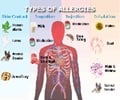A protein secreted from the cat’s skin could irritate the lungs and exacerbate the symptoms of asthma, even in people who have no specific allergy to the animals, UK researchers say.
Cat lovers, otherwise allergic, beware. Cuddling your pet could prove bad for your lungs.
UK researchers have found that a protein secreted from the cat’s skin could irritate the lungs and exacerbate the symptoms of asthma, even in people who have no specific allergy to the animals. Of course the problem is restricted to individuals who generally suffer from allergy of one kind or another.A Europe-wide study by a team from Imperial College, London, took samples from the mattresses of 1,884 people with certain common allergies.
Increased exposure to cat allergen was associated with greater sensitivity of the respiratory system in the volunteers, and encouraged symptoms of wheezing or breathlessness in those who were not known to be allergic to cats.
The increased symptoms, known as greater bronchial responsiveness (BR), suggested that reduced exposure to cats may be beneficial for allergic individuals, regardless of their specific allergies, the researchers said.
“This was an unexpected finding,” Susan Chinn, lead author of the study, said. “We presupposed that we would find increased responsiveness only in those individuals . . . whose blood tests showed that they were allergic to cats. But our study suggests that all allergic individuals have signs of asthmatic responses if exposed to cat allergen, even if blood tests show that they are not allergic to cats.” Dr Chinn and her team report their findings in this month’s issue of the American Journal of Respiratory and Critical Care Medicine, published by the American Thoracic Society.
The study included measurements of house dust mite and cat allergen in mattress dust samples, and data on sensitisation to four main allergens — cat, house dust mite, Cladosporidium (a common mold) and timothy grass. Participants were given a methacholine challenge test, a medical procedure used to diagnose asthma, and the results were compared with the allergens found in the mattress samples.
Advertisement
Previous researches have found asthma to be strongly related to indoor allergens. However, that all patients exposed to cats showed greater responsiveness was unexpected. “Our primary results showed no correlation between levels of house dust mite and BR among individuals with sensitisation to any of the four tested allergens,” said Dr Chinn. “But even moderate exposure to cat allergen resulted in significantly greater responsiveness.”
Advertisement
“Based on the current research, it appears that many individuals could benefit from reduced cat ownership and exposure,” Dr Chinn said. “However, because the findings were unexpected, it is important that results are replicated in other studies before firm recommendations are made.
Muriel Simmons, the chief executive of the charity Allergy UK, said yesterday that the link between cat allergy and asthma was well established. “We know that cat allergens are among the most sticky and resilient particles, and the most common source of allergies after the house dust mite. Even if you move into a house where cats have previously lived, allergens can maintain even after thorough cleaning.”
— Pets are the second-most-common cause of allergy in the home in Britain after house dust mites, and 50 per cent of asthmatic children are allergic to cats.
— Pet allergens are proteins that, when in contact with the skin or breathed in, cause an allergic reaction that provokes the body into producing histamine, a protein.
— The histamine produces swelling and irritation of the upper airways and causes typical hay fever and asthmatic symptoms.
— People who have had asthmatic bronchitis as children in a household with pets, especially a cat, are at a high risk of developing allergies towards cats as they get older.
— Cat allergen is present on very small particles that readily become airborne when disturbed and are easily inhaled.
When a person experiences an allergic response, a chemical called human immunoglobulin, or IgE, produced by the immune system in response to the presence of allergens such as cat hair, binds to specific receptors on the surface of immune cells. This triggers the release of histamine in the body, causing symptoms such as itching, sneezing and runny eyes and nose.
Source-Medindia
GPL/M







